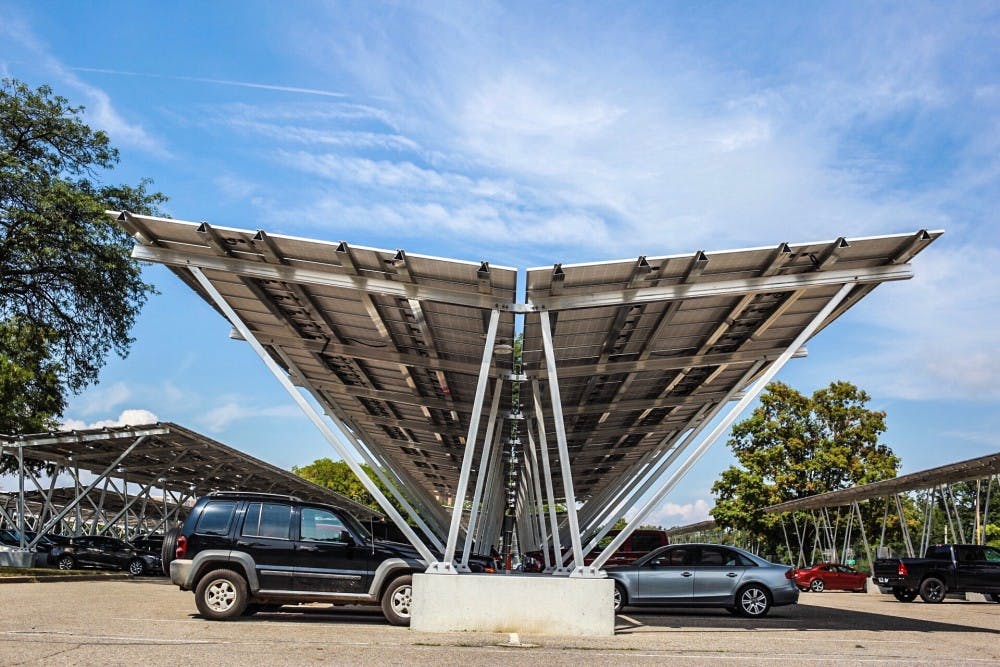Report: Trump likely to impose solar tariffs if USITC recommends them
According to Axios, officials close to the president put the likelihood of him imposing a remedy at 90%.
Well-placed sources within the Trump Administration have told news website Axiosthat the president would likely impose significant remedies on solar module importers if the U.S. International Trade Commission (USITC) recommends them on Sept. 22.
One source placed the likelihood of Trump placing tariffs on international module manufacturers at 90% if the USITC finds in favor of petitioners Suniva and SolarWorld Americas in the pending Section 201 trade action the pair filed in May. Axios also quoted former Obama State Department official David Goldwyn as telling the Atlantic Council think tank last night:
“I think [Trump] will impose tariffs on imported solar panels. The president wants a tariff. All he wants to use is a hammer and solar is the nail.”
Earlier reporting by Axios quoted Trump as telling his Chief of Staff John Kelly to bring him some tariffs and expressing intense frustration that he hasn’t been able to impose almost nine months into his first term.
Abigail Ross Hopper, president and CEO of the Solar Energy Industries Association, reacted with skepticism to this morning’s reports on Trump’s thinking.
“One unnamed administration source does not a decision make,” Hopper said. “It is premature to discuss tariffs. After all, it’s our position the ITC should not make an injury finding in the first place.
“When the time is right, I trust that this Administration will carefully consider the specifics of this case: a Chinese and a German owned company are trying to use our trade laws to put American manufacturers out of business,” Hopper added. “It’s as simple as that.”
Suniva filed for bankruptcy in April and filed trade complaints against its Chinese competitors under Sections 201 and 202 of the Trade Act of 1974 with the USITC eight days later. The complaint asked for “global safeguard relief” from imports of crystalline silicon solar PV cells and modules – a move aimed at limiting international manufacturers’ access to the United States. SolarWorld Americas joined the complaint in May.
The report on Trump’s current thinking comes one day after the Suniva/SolarWorld complaint received the endorsement of the Coalition for a Prosperous America (CPA), a nonprofit organization representing a broad coalition of labor, manufacturing and the agriculture industry which fights against multinational trade deals that it says are not in the interest of American workers or citizens.
In a letter to the head of the USITC, the group wrote: “Thousands of workers have lost good paying U.S. jobs as a result [of overproduction by international module manufacturers]. That these severe effects occurred during a period of booming U.S. [solar] demand, and despite two successful solar trade cases, is all the more troubling.”
Hopper also said CPA’s endorsement of the SolarWorld/Suniva side of the trade case was odd – at least for some of the group’s members.
“We are not going to comment on every group that says they support one side or the other, but this one verges on the ridiculous,” Hopper said. “At least two purported members of their organization are also members of the Energy Trade Action Coalition, the more than 200-member group opposing the petition.”
Support from a group like CPA suggests the solar trade petition taps into an ever-growing frustration with what seems like continual losses of U.S. manufacturing jobs, a rich vein of mostly-white working-class resentment that at least in part helped propel the president to his victory in November. He made the renegotiation of trade deals like the North American Free Trade Agreement (NAFTA) and others a centerpiece of his campaign for president and has continued to tout his pledge to bring well-paying manufacturing jobs back to the United States.
At the same time, Trump routinely disparaged solar electricity as “expensive” and “not working” on the campaign trail, as well as suggesting Climate Change is a Chinese hoax designed to put the United States at an economic disadvantage.
Today’s reporting suggests, however, that tapping into peoples’ fear of losing manufacturing jobs may “trump” the president’s repeated disdain for the solar industry, as a decision to protect the solar industry would, by definition, concede that the solar industry is both a real economic force in the country and is worth protecting.
A report put out by The Solar Foundation earlier this year revealed that the solar industry produced one out of every 50 new jobs in the United States in 2016 and produced $154 billion in economic activity over the same time period.






